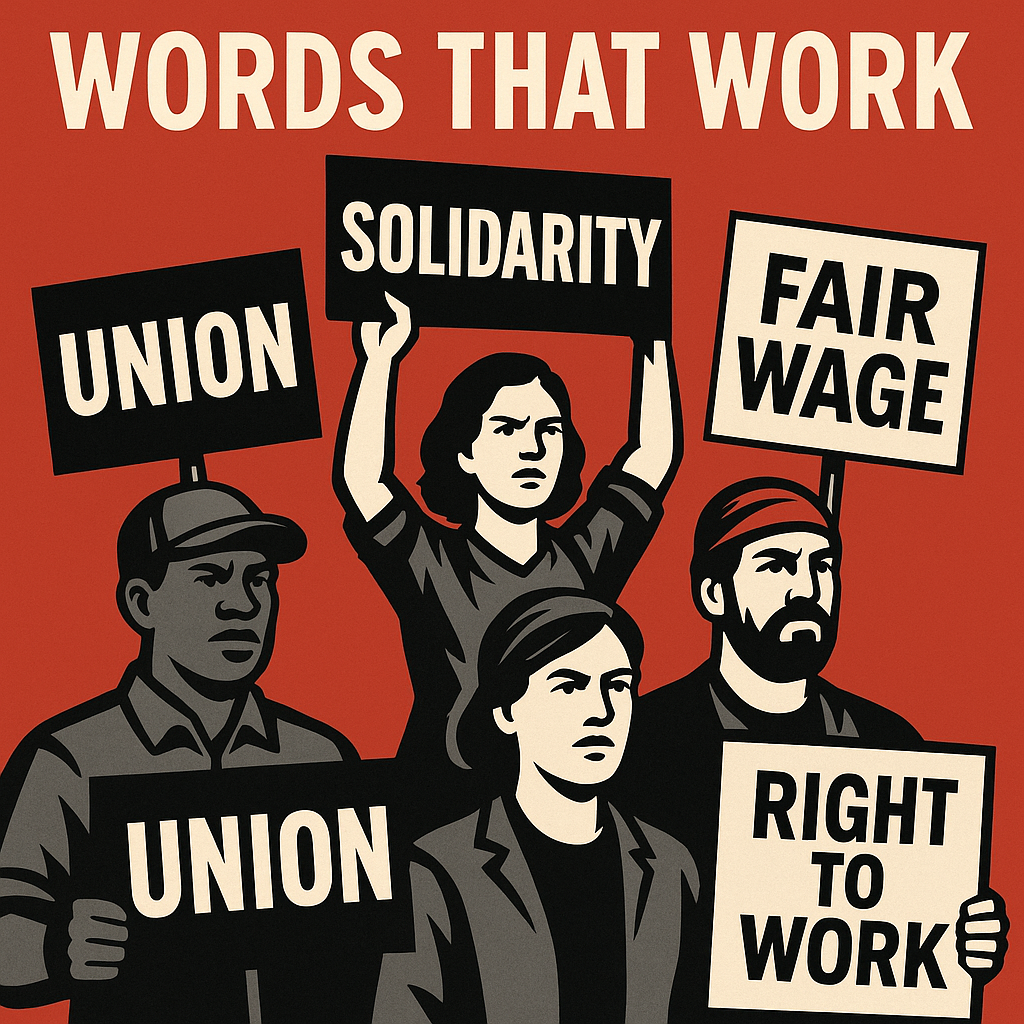When it comes to strategic communication, we often look to brand campaigns or leadership speeches for best practices. But there’s one group that consistently gets language right—unions.
Yes, unions. Whether you support them or not, you can’t deny their mastery of intentional, emotional, and empowering communication. As internal communication professionals, we should take note. Because the words unions use aren’t just words—they’re tools of transformation, symbols of solidarity, and signals of strength.
Let me explain.
The Power of Language
Unions don’t just represent employees. They reframe them.
- They don’t have “employees.” They have members.
- They don’t sign “contracts.” They negotiate collective agreements.
- Workers don’t file “complaints.” They file grievances—and those grievances are taken seriously.
These terms are far from accidental. They are carefully chosen to reinforce dignity, fairness, and shared power. They make people feel seen, heard, and supported. They remind workers that they are part of something—a structure that exists to protect, empower, and advocate for them.
Compare that to typical corporate language, which often favors euphemisms and softeners: “resource optimization,” “organizational alignment,” or “competitive compensation packages.” While well-intentioned, these phrases can feel cold, vague, or downright manipulative when trust is lacking.
Words that Shift the Power Dynamic
Let’s look at a few more examples:
| Union Term | Typical Employer Term | Why the Union Term Works |
|---|---|---|
| Member | Employee | Implies belonging and voice |
| Collective Agreement | Employment Contract | Emphasizes negotiation and equality |
| Grievance | Complaint | Suggests formality, seriousness, and rights |
| Solidarity | Collaboration | Speaks to loyalty through shared purpose |
| Job Action | Disruption | Frames protest as strategic, not chaotic |
| Shop Steward | Peer Rep | Implies authority, trust, and trained advocacy |
Every word is a choice. And in the case of unions, those choices are rooted in power, protection, and pride.
What This Means for Internal Communication Professionals
So what’s the lesson here for us?
As internal communication professionals, we are often caught in the middle—between the organization and its people. But that doesn’t mean we have to speak like the institution. In fact, it’s our responsibility to bridge the gap between strategy and humanity, policy and purpose.
We can:
- Choose words that respect employees’ intelligence and emotions.
- Use language that builds trust, not just compliance.
- Shift from transactional to relational communication.
Think about the difference between saying “You are required to…” and “We want to make sure you feel safe, respected, and informed, so here’s what we’re doing…” It’s subtle, but it matters.
A Call to Communicate with Intention
Unions have long understood what many organizations are just beginning to realize: that language isn’t just descriptive—it’s directive. It influences behavior, builds culture, and reflects values.
If we want to build cultures of trust, respect, and engagement, we need to be more intentional with our words.
Because every memo, message, or meeting is an opportunity—not just to inform, but to inspire.
About the Author:
Priya Bates is an award-winning Internal Communication Strategist and President of Inner Strength Communication. She believes in building business from the inside out—starting with people. If you’re ready to turn your communication into a strategic force for connection, culture, and change, connect with Priya at www.innerstrengthcommunication.com.



